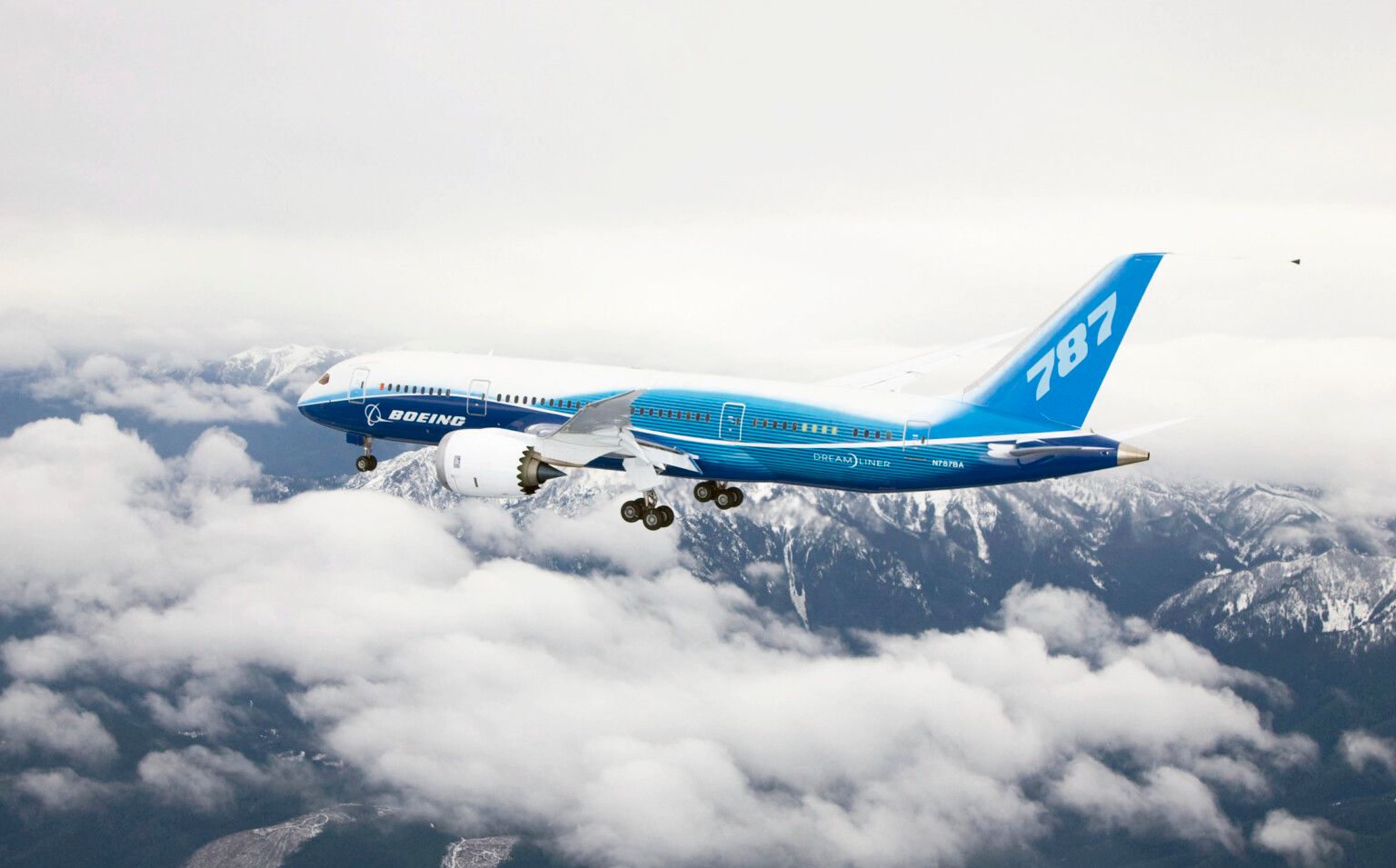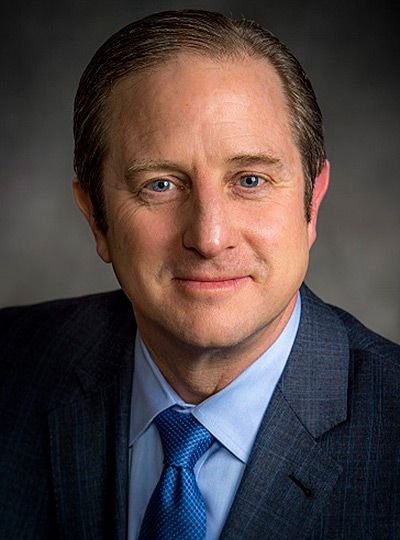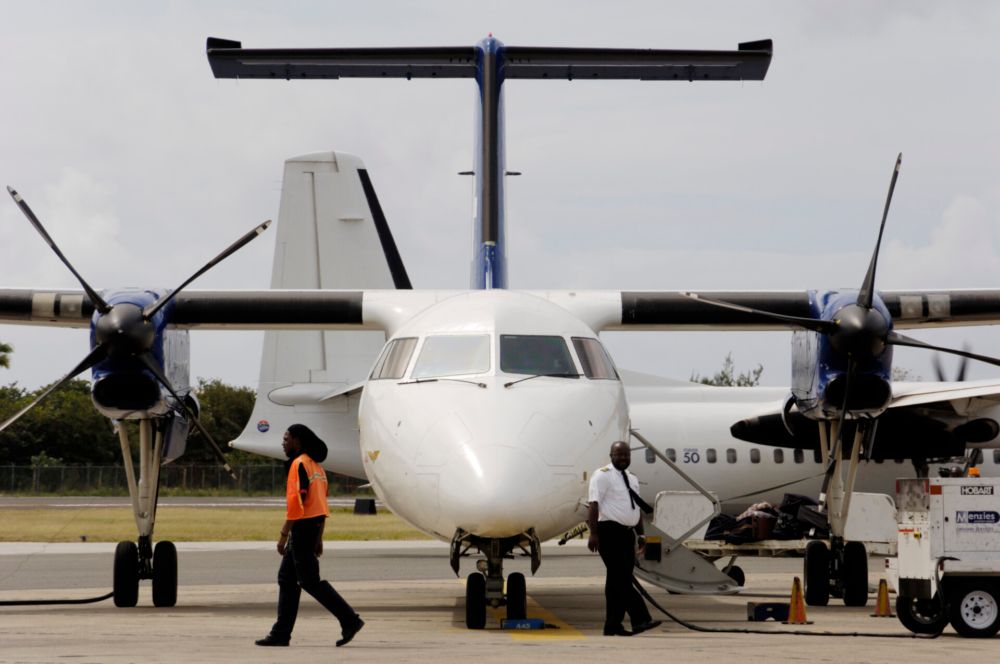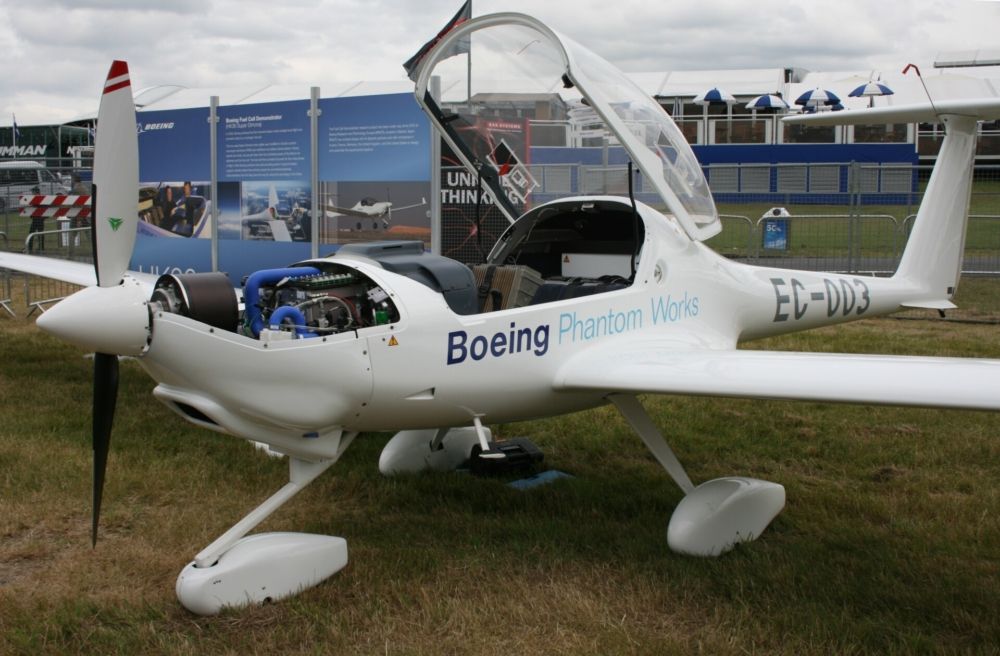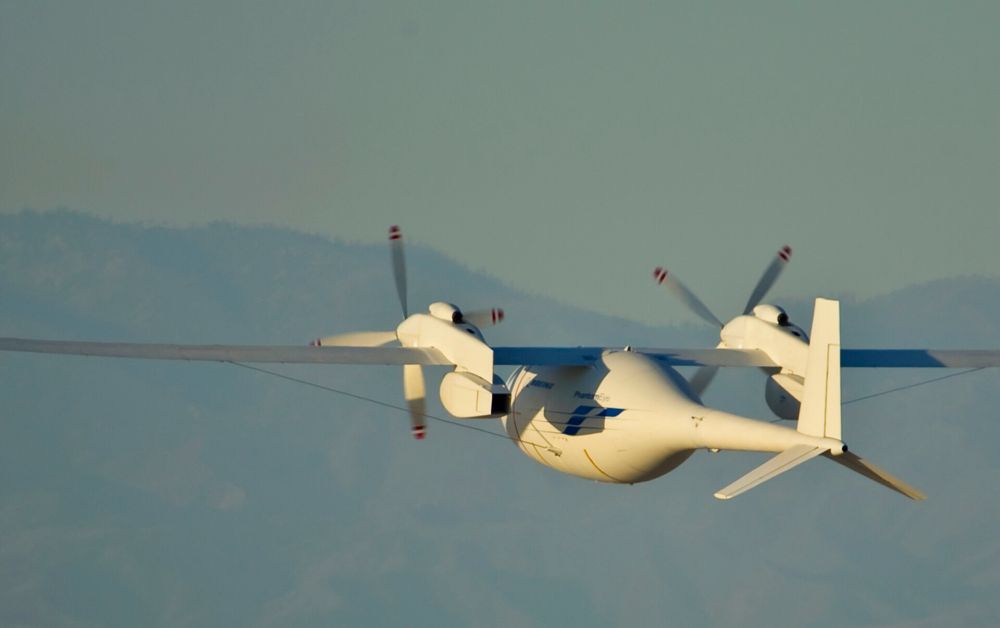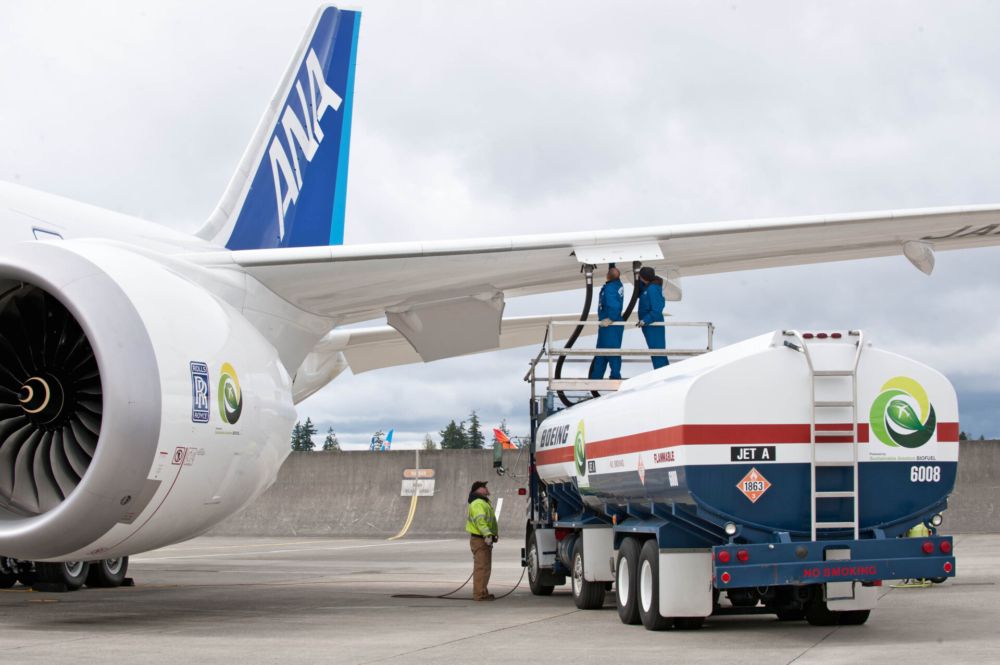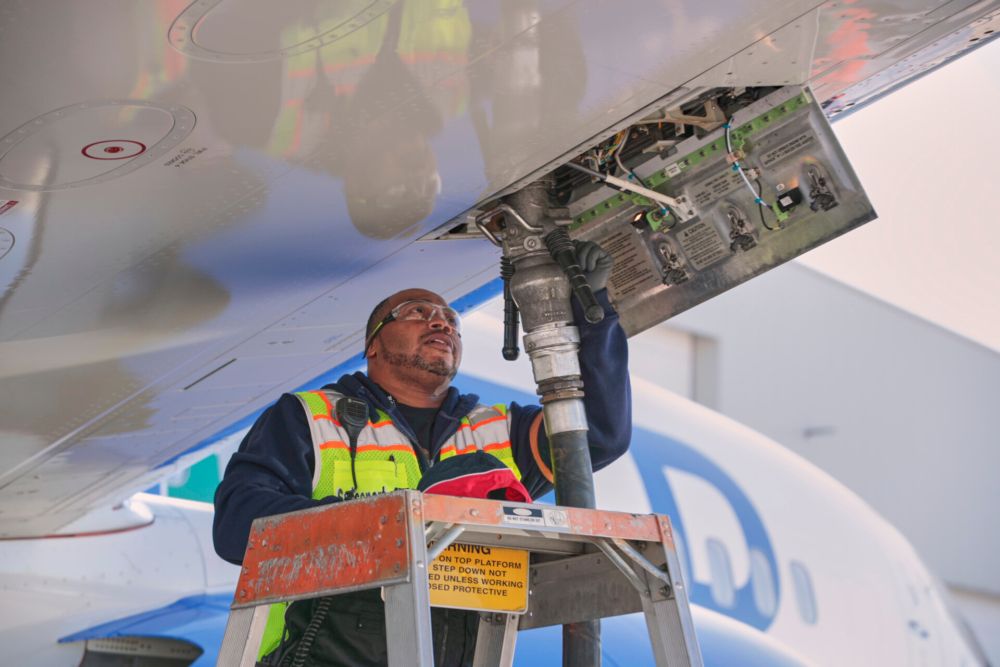Boeing’s commitment to sustainability has accelerated with the appointment of its first-ever Chief Sustainability Officer, Chris Raymond. Chris is leading the way towards a lower carbon future, with a strong emphasis on fleet renewal and sustainable aviation fuels. Simple Flying caught up with him to better understand why hydrogen is not such a big priority for Boeing right now.
Hydrogen is a challenging fuel type
With the aviation industry pushing towards a greener future, there are still big questions over what the fuel of the future should be. Big leaps are being made in electric aviation, but its applicability for larger aircraft remains in doubt. Sustainable fuels hold great potential, but can we produce enough in time? And then there’s hydrogen.
At first glance, hydrogen appears a very appealing prospect. It’s lighter than fossil fuels; it produces only water vapor as a by-product and has around 2.5 times more energy per kilogram than kerosene. However, it’s also difficult to utilize in its natural form, and needs to be supercooled and super-compressed before it can be used as a fuel.
Chris Raymond is Boeing’s first-ever Chief Sustainability Officer, a role that was created in mid-2020 to advance Boeing’s approach to sustainability. Simple Flying caught up with him on the sidelines of the Dubai Air Show, where he explained the challenges involved in developing a hydrogen plane. He said,
“Liquid hydrogen is probably the best way to use it as a fuel, but it requires big cooling systems and big storage systems. Hydrogen requires about four times the volume to get the same amount of energy, so you end up with a plane that is more fuel tanks than it is passenger capacity – and that risks the efficiency overall.”
Is aviation the best use of hydrogen?
As well as the design challenges, Boeing is not yet convinced that the pathway to turning it into a fuel is an equitable one. Producing hydrogen requires huge amounts of electrical energy, and if that energy is not supplied by renewable sources, the hydrogen is no longer a clean energy source at all.
Large electrolyzer plants for producing green hydrogen are under development. For example, Whitelee, on the outskirts of Glasgow, is home to a future electrolyzer site that will use a 40MW solar farm to produce up to eight tonnes of green hydrogen a day. It would be the biggest electrolyzer in the UK, producing enough to power 550 daily bus trips to Edinburgh and back.
But Kearney estimates that even a small turboprop aircraft would require 1.4 tonnes of hydrogen to go 1,500 km (930 miles). So what’s better – 550 fifty-mile bus trips between the Scottish cities, or five to six short return flights in a turboprop? Chris Raymond shares these concerns, stating,
“Taking that hydrogen that you make using all that electricity, is the best thing to do with it to then further process it into a fuel? We just aren't convinced yet on it. We're not saying it's not possible. But when you get to the lifecycle carbon assessment of that, right now, our assessment is it'd actually be worse than fossil fuels.”
With no infrastructure in place to efficiently get liquid hydrogen to airports, there’s the added downside of fleets of trucks driving it around the country. It’s a bit of a minefield at the moment, which is one of the reasons Boeing is not focusing too much on hydrogen at this stage of the game.
Hydrogen is not being ignored
Saying that Boeing isn’t focusing on hydrogen doesn’t mean Boeing is ignoring hydrogen. Indeed, Boeing has worked with hydrogen for many years, and in fact, flew the world’s first crewed flight using fuel cells back in 2008. As Raymond explained,
“Boeing's flown five different airplanes on hydrogen. Four of them have been some form of fuel cell, using that to produce electrical power, and then we flew an airplane in 2011 that was liquid hydrogen … our view is not that it's impossible, we are studying still, we just don't think the timeline for that to really enter the market in a big way is anytime soon.”
Airbus, of course, came out and put a timeline on the first flight of a 100% hydrogen aircraft by 2035. But that could well be a maiden flight for an experimental aircraft, which is a very long way indeed away from changing the landscape of commercial aviation. Entry into service could be five or even ten years later, and replacing the thousands of aircraft already in service would likely be several decades beyond that.
And so, although Boeing remains actively involved in the development of hydrogen as an alternative fuel source, Chris Raymond firmly believes that time and investment are better placed elsewhere in the short term, into projects that can have an impact now and not a couple of generations into the future.
SAF is where it’s at
Although hydrogen has the potential to decarbonize aviation at some point in the future, other solutions need to be explored if the industry is to make a significant reduction in the near term. Chris Raymond believes the immediate focus must be on fleet renewal because that’s where the biggest quick wins can happen. Beyond that, he says that “…there's no question that we have put more emphasis on sustainable aviation fuel.
“Our view is, if the goal is to lower carbon emissions, then we really have to all be focused on SAF in the near term, because we need something that can lower the carbon emissions of all the airplanes that are flying right now.”
To an outsider, this could almost look like yet another Boeing vs. Airbus scenario, where both OEMs have thrown their hats in the ring for different technology types. But there’s more joined-up thinking between the two planemakers than some might believe.
“We agree with Airbus and Airbus agrees with us - we both say we're going to need a lot of sustainable aviation fuel. I think we're actually more aligned in what we both say than maybe some people believe us to be. They put more emphasis on hydrogen, we put more emphasis on SAF, but we both know that we need to make aviation cleaner.
“If we don't make it cleaner, we're going to risk it not growing as much in the future. It's not good for any of us if the benefits of flying start to be taken away because the industry starts to be viewed as not doing enough to lower carbon emissions.”
Boeing has already set itself a goal of ensuring all its aircraft are 100% compatible with SAF by 2030. While hydrogen is certainly still on Boeing’s radar, the immediate focus is on those things which will make the most significant difference right now.

